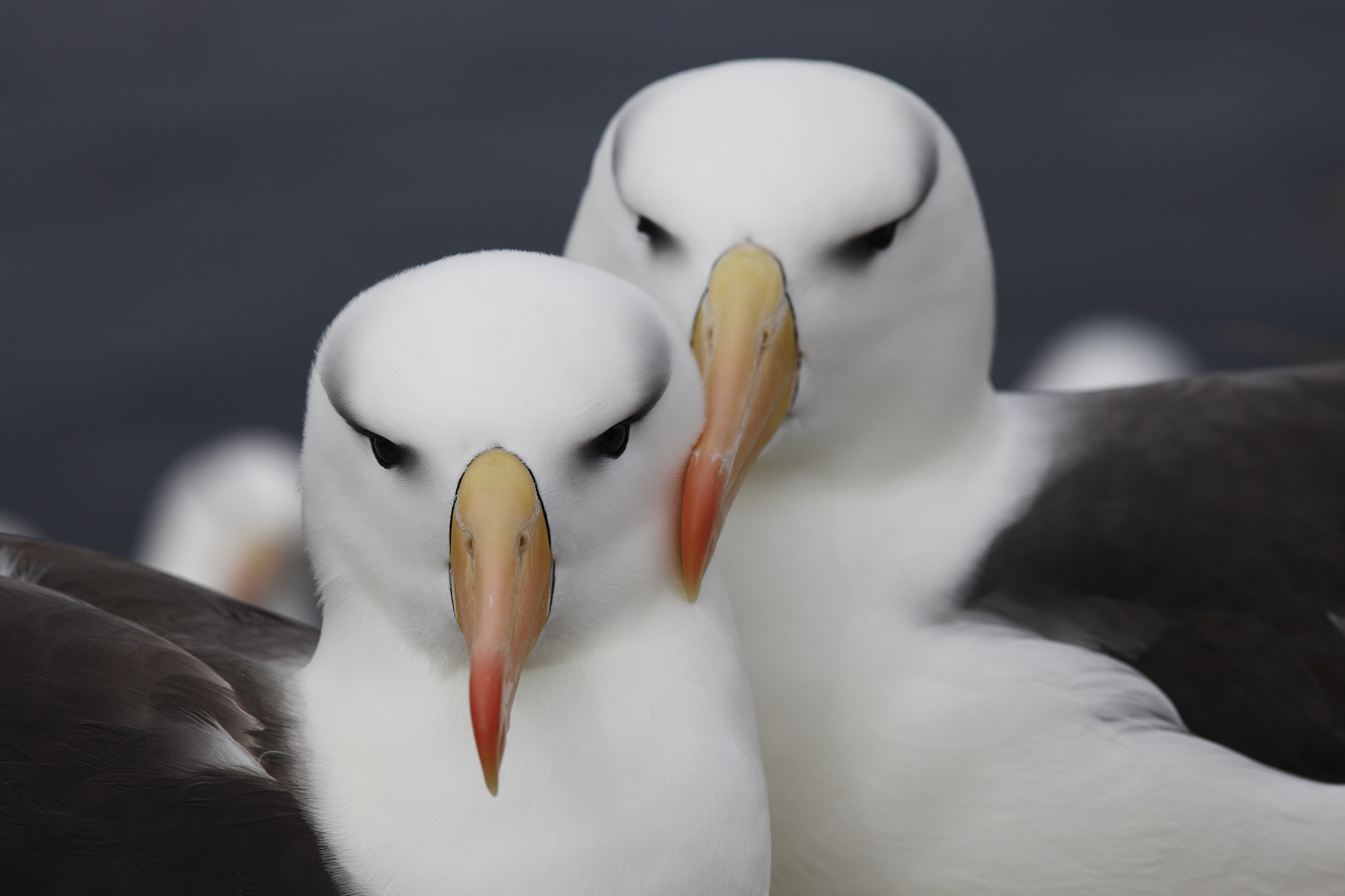
A Black-browed Albatross pair on New Island, South Atlantic; photograph by Ian Strange
Francesco Ventura (Departamento de Biologia Animal, Universidade de Lisboa, Portugal) and colleagues have published in the journal Polar Biology on chick mortality events in the Black-browed Albatross Thalassarche melanophris on New Island in the South Atlantic.
The paper’s abstract follows:
“In the context of environmental change, determining the causes underpinning unusual mortality events of vertebrate species is a crucial conservation goal. This is particularly true for polar and sub-polar colonial seabirds, often immunologically naïve to new and emerging diseases. Here, we investigate the patterns of black-browed albatross (Thalassarche melanophris) chick mortality events unrelated to predation recorded between the 2004/05 and 2019/2020 breeding seasons in four colonies across the species range in the Falklands. The prevalence of these mortality events was highly variable across years, causing the death of between 3 and 40% of all chicks in the studied plots. With few exceptions, mortality was patchily distributed. Using clustering methodologies, we identified the spatio-temporal mortality clusters based on the nest locations and chick death date. Using generalised linear models and generalised additive mixed-effects models we found that chicks nearer the first mortality event were predicted to die before those in more distant nests. The probability of death increased with age and was highest for chicks close to nests where a chick had died previously. Our findings, along with the symptoms consistently exhibited by most deceased chicks in the study, strongly suggest the prevalence of a widespread infectious disease, potentially with a common aetiology, both in areas with regular and with very rare human presence. Understanding the causes driving these disease-related mortality events, which seem different from the outbreaks documented in the literature, is a conservation priority for the Falklands black-browed albatross population, which comprises over 70% of the species global population.”
With thanks to Janine Dunlop, Niven Librarian, FitzPatrick Institute, University of Cape Town
Reference:
Ventura, F., Granadeiro, J.P., Matias, R. & Catry, P. 2021. Spatial and temporal aggregation of albatross chick mortality events in the Falklands suggests a role for an unidentified infectious disease. Polar Biology 44: 351-360.
John Cooper, ACAP Information Office 09 March 2021

 Español
Español  English
English  Français
Français